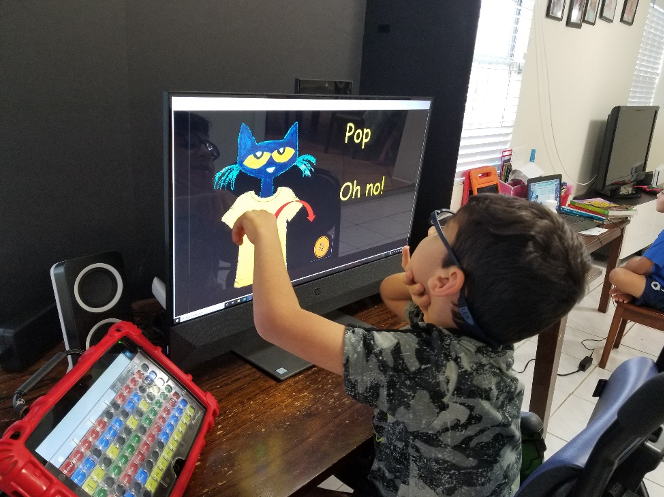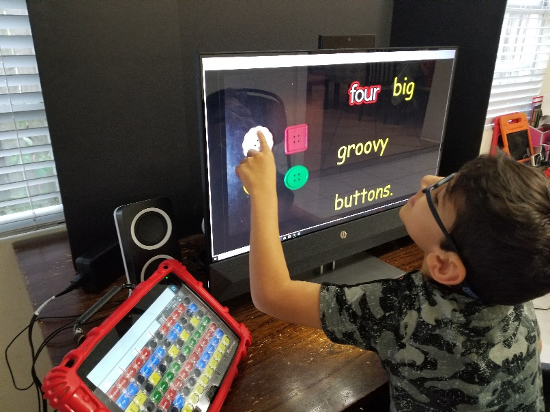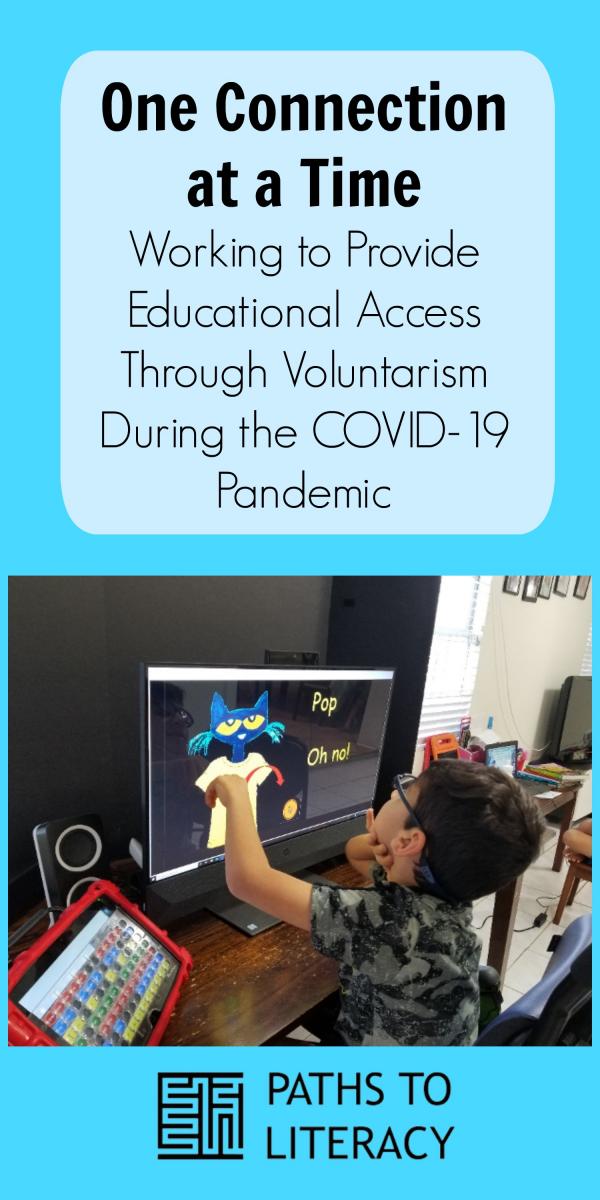One Connection at a Time: Working to Provide Educational Access Through Voluntarism During the COVID-19 Pandemic
Like all of you, my inbox and social media feeds have been flooded with stories about COVID-19. In both my professional and personal life, I’ve seen the ripple effect of a tiny protein on the lives of children with visual impairments, their families, and adults with visual impairments. Besides social distancing and washing my hands, I want to “do” for others. In addition to being on the lookout for toilet paper for my 85-year-old mother and some friends with complex health needs, I have looked for other ways I can help.
I got an idea: why not connect families who have a child with a visual impairment with a volunteer who can provide support? Volunteers are not in the role of teachers of students with visual impairments, but rather supports to do things, such as make materials, read with children virtually, format documents to be ready to be put into braille, emboss documents, or log in to a Zoom session to provide access to what visually isn’t accessible to a child. Though it has been slow to “catch on”, I’ve been able to do some pairings that have had positive outcomes. I’ve also expanded the idea, so a parent with a visual impairment who needs support for their K-12 child’s education can ask for a volunteer.
Working Together to Adapt Pete the Cat Books for a Child with CVI
One of the first parents to reach out to me was Barbara, the mother of Logan who is a delightful 7-year-old 1st grader who has learning challenges from cortical visual impairment (CVI) and a communication impairment. Prior to the COVID-19 pandemic, Logan’s TVI showed Barbara how to adapt books in Google Slides, so Logan can have better visual access to the books. Google Slides can be used to reduce complexity by narrowing down the content and presenting it on a black background. See Weather Book for Children with CVI.
In addition, text can be enlarged, fonts changed, and bubble words can be used to teach sight words.
Like many young children, Logan is a “Pete the Cat” fan. Barbara asked for a volunteer who could assist her with adapting books for Logan.
Melanie, a special education teacher who is studying to become a teacher of students with visual impairments, signed up to volunteer. I thought these two would make a great pairing and I wasn’t wrong!
Barbara and Melanie worked on activities to build Logan’s math skills using the book Pete the Cat and His Four Groovy Buttons. Melanie followed Barbara’s directions to simplify the drawings, use the bubble words, and place everything on a black background.
Melanie created an adapted book using images she prepared in Google Slides to focus on specific content such as counting buttons or reading sight words. In the photo a yellow shirt is shown with the word shirt enclosed in a red bubble. This color combination and simple picture is one that is appropriate for Logan based on the information his TVI gathered through assessments and input from his educational team.

In the photo below, Logan is seen counting the buttons on Pete’s shirt.

Melanie made the slide below of the 4 buttons on a black background, helping Logan to focus on them specifically. In the picture, with Barbara’s support, he is counting the buttons.

Barbara shares, “My plan is to use this book to familiarize Logan with simple math concepts and new vocabulary through direct instruction in an activity that he will enjoy. I also plan to use the book to build literacy through shared reading.” Melanie said, “I just hope this [book] can help Logan's learning and gives him one more adapted story to read with his family at this time.”
Isn’t it great that Barbara had a volunteer to help her adapt the book and design activities for Logan?
Together we can reach out and support each other, even when we have to keep socially distant. Be safe!

